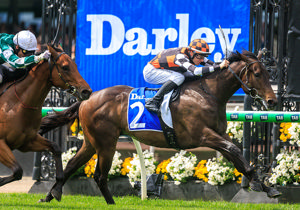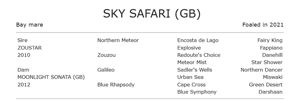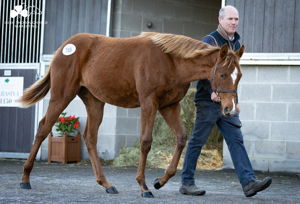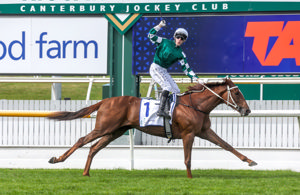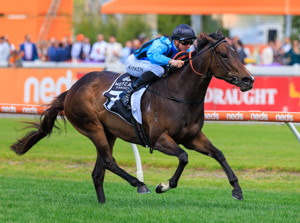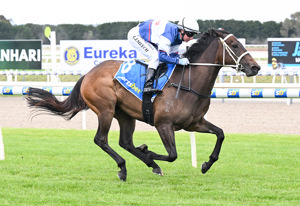It's Perth's turn to bask in the national sporting spotlight as The Ashes gets underway and the first G1 of the Pinnacles Carnival is run at Ascot - the famous WATC Railway Stakes!
Click here for Breeding to Win - 2025 Railway Stakes, tips and roughies with a hope!
Before humans had cars, we had trains to get around. Long before we had trains, we had horses.
Our world changed and blossomed in so many ways from the time the first human sat upon the back of a horse. Suddenly we had new powers - of speed, of travel, of movement!
Horses carried our worldly possessions to pioneer new territories. They tilled our paddocks, ferried us on our explorations of the globe and its wonders, galloped willingly into wars because we asked them to. The evolution of all we call “civilisation” would not have been possible without horses.
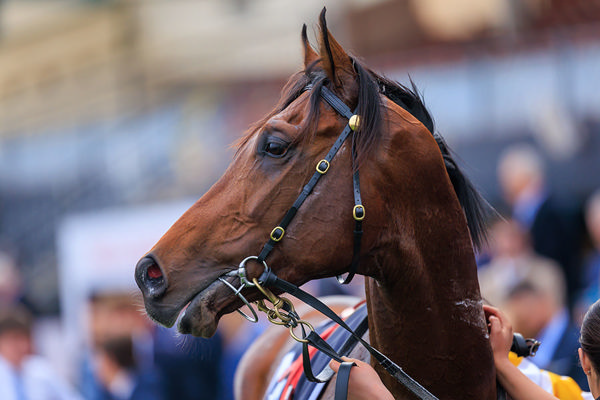
That generosity and courage has been employed for our entertainment too!
Wherever humans gathered and settled, there soon came to be racecourses and people thronging to them to enjoy the endless fascination and excitement of watching hot - blooded horses run.
At first setting out on foot and in carriages, in due course those racegoers travelled on trains! The rich and the poor, the punter and the fashionista.
In Australia, those old newsreels of massive crowds descending from steam trains and pouring into our nation's racecourses are part of our social heritage and racing folklore - just like the flickering images of great horses long gone, which those very same excited crowds were there to see.
Where there's an old racecourse there will be a train station close by.
In Western Australia back in 1881, the committee of the long-defunct Swan Turf Club wished to commemorate the amalgamation in that year of the Fremantle and Midland rail lines, which was of course a massive development for Perthians at the time.
The committee dubbed their one-off race the “Railway Stakes.”
Six years later the WATC inaugurated the Railway Stakes we know today - named for the line which delivered huge raceday crowds from Bayswater station to Ascot racecourse.
The first Railway Stakes was run on Perth Cup day in 1887. The race and its prize purse of 60 sovereigns were won by a three year old called Nimrod carrying 41.5kg, who soundly beat the favourite Hermit (58.5kg) - in a field of four runners.
Hermit’s day wasn’t done - he backed up later on the same afternoon in the Perth Cup and ran second again!
The 1888 Railway was won by this tough customer Hermit, who got his well earned revenge - and the handicapper got Nimrod, who finished third.
The Railway was initially run over 2000m (until 1921, when it was set at the mile) and until 1895, only Western Australian bred horses were permitted to run in it.
It was always an eagerly anticipated feature of the WATC's Summer Carnival and traditionally held on Perth Cup day, New Year's Day.
In the years 1972 - 1983 the race ran over 1500m before reverting to the classic 1600m distance. The Railway Stakes has been a G1 race since 1979.
As a handicap, it is a very difficult race to win twice and in its entire storied history only two horses have done so - Tudor Mak in 1966/67 and the champion Luckygray in 2011/13.
The coveted G1 Railway Hcp / WFA Kingston Town Classic double ( the latter now the Northerly Stakes) is almost as hard to do, and hasn’t been achieved in a long while - only the mighty Better Loosen Up (1989), Old Comrade (2001) Modem (2004) and Sniper’s Bullet (2009) have completed this feat.
In 2001 the WATC moved the Railway to its current late November slot.
From 2011-2015 the famous mile was part of Perth's “Super Saturday” which hosted dual G1 races the Railway and the Winterbottom Stakes, as well as the WA Guineas and other black type races.
In 2016 the two G1s each got their own day, when the Winterbottom was moved to follow a week on from the Railway Stakes.
Early Days
The stallion Two Of Hearts sired the winner of three consecutive early editions of the Railway from 1890 to 1892; Wandering Willie (who also won two Perth Cups), Will-O’-The-Wisp and Lord Byron - and they were full brothers!
Their dam's lowly studbook pedigree went back a single generation, but the old girl had something.
Wandering Willie went to stud and sired Willie, the Karrakatta Plate winner of 1900.
Looking back through the record one sees that in 1894 the Ascot crowds bore witness to a Railway winner named Carbine.
Back in the days before the Registrar protected certain names, it was common for owners to dub their budding superstar with the name of a racehorse that actually was a champion - but calling your yearling “Carbine” was some next level optimism. Luckily said horse was good enough to win a Railway Stakes!
In 1907 it was the connections of one Man O’ War who led their winning charge into the Ascot enclosure.
A stallion who changed the West Australian breeding industry, and the Railway Stakes forever, was Jolly Beggar. No imposter was he!
Born in 1906, the striking jet black son of the imported Ayr Laddie was a champion on the track, and a close relation of the breed shaping Australian racehorse and sire Chester.
Jolly Beggar completed the Karrakatta - Railway - Perth Cup treble (only the legendary Eurythmic would equal this feat ) and then he travelled across the Nullabor to win the AJC All Aged / Doncaster Hcp in Sydney, and two WFA races in Melbourne, before retiring to stud back home in the west.
Jolly Beggar's progeny won over all distances but were particularly great milers, and they collected the Railway Stakes of 1923 (Jolly Handsome) ‘24 (Borgia) ‘27 (Jolly Odd) and 1932 (Jolly Fair)
Not even the horrors of World War II could stop the Railway from being run.
The 1943 victor Beaufine (by the champion sire Sansofine GB) was the best Railway winner of the era.
Sansofine sired three more Railway winners - Hinda in 1941, El Boom in 1956 and Aptofine in 1958, and was a leading WA broodmare sire for many years.

1959 was the year of Aquanita!
The black beauty burst into the nation's consciousness when he went east after his 1959 Railway win as a three year old, and during the next four seasons swept a majestic procession of major races including the Doomben 10,000, Underwood Stakes (twice), WS Cox Plate, Futurity Stakes, Craiglee Stakes, Mackinnon Stakes, Turnbull Stakes and C F Orr Stakes (this is a very incomplete list! )
In the VATC Futurity sprint Aquanita carried a whopping 66.8 kg to win, and in the following year he ran one of the great races of his career when third in the Melbourne Cup to Even Stevens.
Sooled around the field to take the lead a long, long way from home, Aquanita charged into the Flemington straight and was two lengths clear of them with 200m to go.
But there the great horse hit his distance limit, and even in the grainy old footage we have of that Cup you can see the moment clearly - by rights he should have run near last. Yet he rallies his forces somehow, and stays on for third, as Even Stevens storms ahead to the post.
Aquanita was a king among beasts, but his pedigree was far from blueblooded, as he was out of a NSB mare.
This had rendered her yearling son by the imported sire Wateringbury ineligible for any Classic races, and he had been a bargain basement yearling (575 guineas) for owners Bill and Jack Thomas as a result.
It also meant that Aquanita was unable to pass on his greatness, as the future Hall Of Famer naturally only served NSB mares!
In 1966 / 67 the gifted Tudor Mak (by Markapura) won the Railway and remains the only horse to win back to back editions of the race. He was the best performer by his sire, who would achieve immortality as the damsire of the great progenitor Biscay.
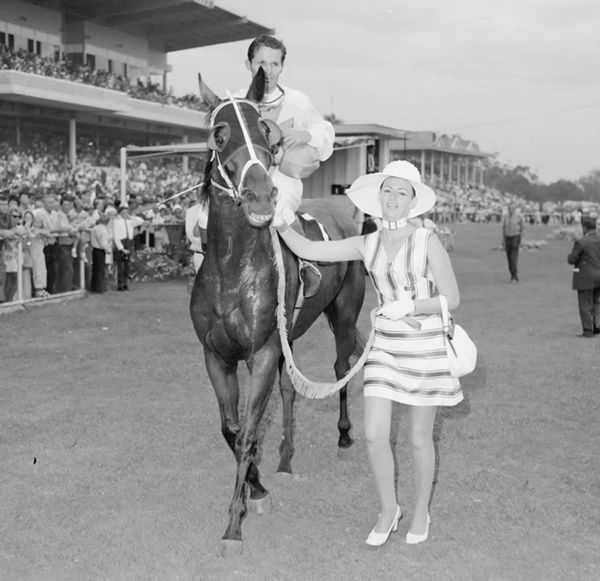
Following Tudor Mak's historic double came one of the great fillies of the West Australian turf, La Trice.
The 1968 Railway Stakes which she won as a three year old is the only edition accredited to her, but before the Luckygray / He's Remarkable furore of 2011, it was the 1970 Railway debacle featuring La Trice and Kilrickle that was the most infamous result in living memory!
La Trice was a true champion. The daughter of Matrice had won the Karrakatta Plate at two before her Railway triumph. After recovering from a severe injury that would have ended the career of most horses, the great mare returned to win two consecutive Winterbottom Stakes.
La Trice stormed down the Ascot straight to win the 1970 Railway by two and a half lengths from Kilrickle, and the crowd cheered their darling as her beaming jockey John Miller brought her back to scale. But hang on. Hold all tickets! The stewards were viewing the vision. A deafening roar of disbelief arose when the stewards duly announced that they were awarding the race to Kilrickle because of interference caused to him by La Trice soon after the start.
Simply horrendous. She bolted in! Was there some wacky tobaccy being passed around the stewards room that day? (It was 1970 after all).
Perth could talk of nothing else for weeks - but the record says La Trice only won a single Railway Stakes.
Crowd favourite Detonator blew them away in the Railway of 1975. The big, proud son of the French-bred sire Niksar is still remembered with awe in the west for his 1976 Bunbury Stakes triumph, in which he shouldered 67 kg to victory.
Elite sprinter-miler Asian Beau became one of WA's turf icons, winning 12 of 14 starts including the “triple crown” of the Winterbottom Stakes, the Lee-Steere Stakes and the 1979 Railway Stakes in the same year.
A son of the 2025 Hall Of Fame inductee Beau Sovereign - WA's champion sire of the late 70s/1980s, Asian Beau left a few good daughters from his time as stud with families that are still going strong.
In 1989 Ascot played host to a galloper who holds a special place in Australasian racing history.
Better Loosen Up or “BLU” as he was known to his legions of fans, just seemed to break records wherever he appeared!
In WA, the great son of Loosen Up under champion jockey Michael Clarke became the first horse to win the G1 Railway / Kingston Town double.
The four year old gave them all weight but smashed the Railway field, including the defending champion Marwong.
The following year the David Hayes trained superstar was at the peak of his powers. He won the Cox Plate - where he came from 30 lengths off the lead to set a course record time! - and then won his thrilling and historic Japan Cup.
In the Autumn he won the Australian Cup and beat Vo Rogue by five lengths. Who beats Vo Rogue by five lengths? BLU that’s who.
The 1990s saw memorable Railway winners Medicine Kid, Jacks Or Better, Willoughby, Machine Gun Tom and Slavonic.
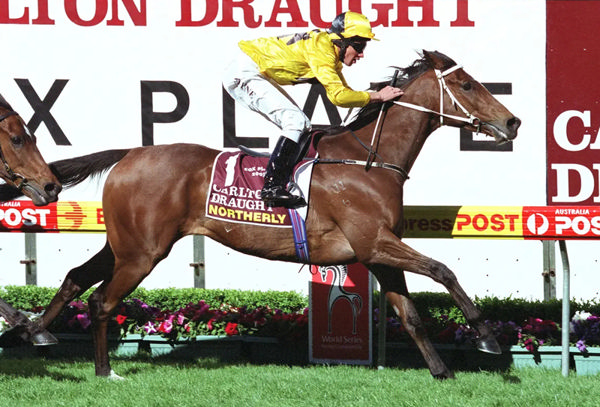
Then, at the turn of the decade arrived the horse who would come to be known as “The Fighting Tiger”
The 2000 Railway Stakes was the very first G1 win for Northerly - the son of Serheed who would retire as one of the all time greats of the Australian turf.
Northerly, with Dan Miller aboard, was lining up for just his sixth start in the Railway. He had little luck in running and was forced to take off at the 800m having sat wide the whole way.
Northerly looked to be going absolutely flat out at that point.
This would become a familiar theme as doggedly, he bore onwards.
As heads turned for home Northerly was up there eyeballing dual G1 winner Umrum and soon passed him.
Old Comrade had emerged from the pack and set out after Northerly, who had done three times the work he had in the run. Surely it would tell? But Northerly just kept going at the same relentless speed. He won the Railway easily, and a legend was born!
The following year Northerly was back, lumping 61.5kg, an impossible task even for the freak that he was.
He led them up but was overtaken as Old Comrade (Old Spice) - a very fine galloper in his own right, and a 4 x G1 winner including an Australian Cup - claimed the Railway victory and went on to equal BLU's achievement by winning the Kingston Town.
Old Comrade was a ripper racehorse, but Northerly stands proud and untouchable with two Cox Plates, a Caulfield Cup and an Australian Cup amongst his nine G1 wins.
The $1.5 million Railway Stakes of 2025 will post yet another thrilling chapter in the history of this great race.
Punters, owners, trainers and breeders alike - Aussies love their big 1600m handicaps!
The Doncaster, the Epsom, the Toorak, the Railway - big races with big fields and high stakes, which never fail to showcase everything great about our sport.

